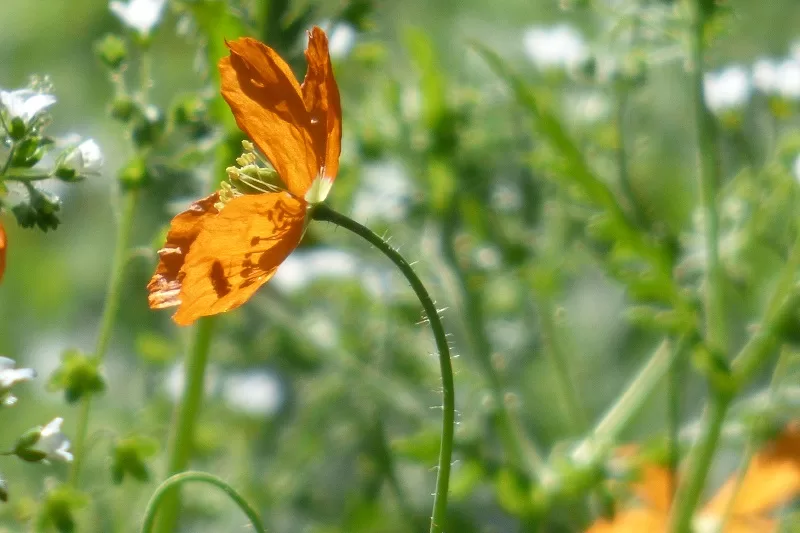
It’s a good year for the California poppy. The extended heavy rains came at just the right time for California’s state flower to flourish, and the golden blooms are popping up in some unexpected places.
The fire-scarred Simi and Conejo Hills that burned in the 2018 Woolsey Fire are carpeted in places with a tapestry of golden flowers. Poppies are blooming on the steep canyon walls along Malibu Canyon and Dume Kanan. Out in the Santa Clarita Valley and down in San Diego County, the poppies have already peaked, but in the traditional high desert locations, like the Antelope Valley, the bloom is just beginning.
Several well-known poppy locations are closed this year, after the highly publicized 2019 “super bloom” caused hoards of trespassers to crush fragile wildflowers in pursuit of the perfect Instagram picture, but there are plenty of places to look for this iconic flower. The Antelope Valley Poppy Preserve is the most famous site for viewing poppies, but almost any trail on a south-facing slope in the Santa Monica Mountains National Recreation Area or in Conejo Valley Open Space this spring has a good chance of having at least a few poppies, and maybe a whole hillside or two.
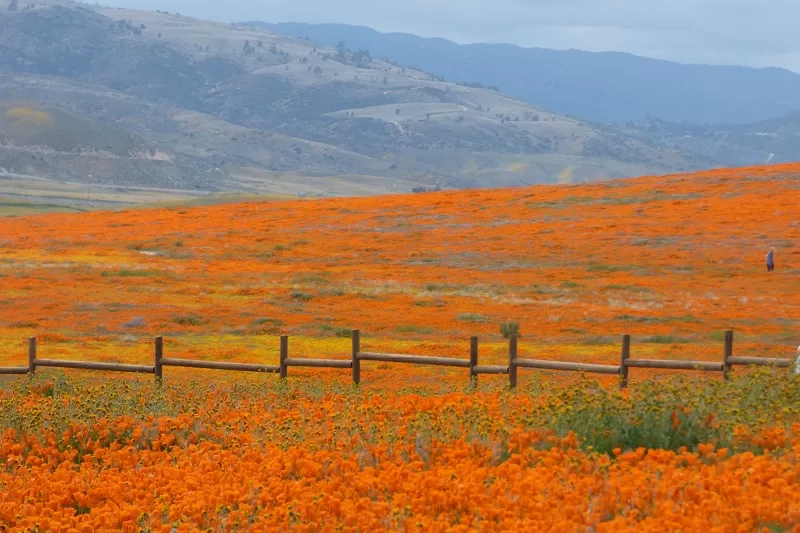
It is critically important to stay on the trail, no matter how beautiful the flowers are up there on the hill. Many wildflowers cannot grow in compacted soil that has been trampled underfoot. A field of poppies can be transformed into a wasteland of bare earth and invasive weeds if too many people stomp on it.
Most visitors respect the parks they visit, but the small number determined to trample or pick wildflowers may get more than they bargained for. Nettle lupines live up to their name, and many members of the phacelia family can cause contact dermatitis. Wildflowers attract all kinds of visitors, including bees and wasps. Rattlesnakes also seek the shelter provided by the plants, and sightings are already on the rise as the weather warms up.
To avoid crowds it’s a good idea to go early, or plan a weekday visit. Wildflower sites that require visitors to hike in will always be less crowded than those located in easy reach of parking.
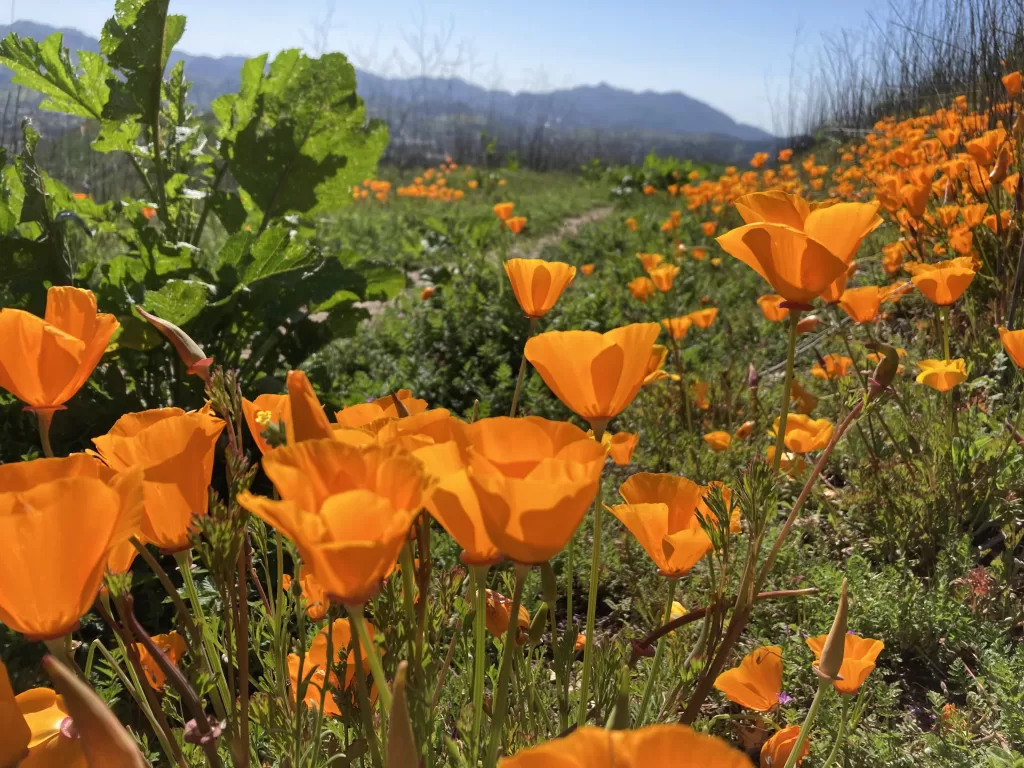
In some canyons, poppies and other wildflowers are blooming right by the road. This is a blessing for the mobility impaired who enjoy nature but cannot easily hike out into it, but a hazard for anyone reckless enough to try to park and get a closer look. Slowing down gives one more time to enjoy seeing flowers, but also reduces the risk of hitting someone who has pulled out on the side of the road or is attempting to pull back in. No flower, no matter how rare or beautiful, is worth an accident.
The California poppy is one of the most instantly recognized wildflowers anywhere, and it is the best known member of the poppy family in California, but it isn’t the only one. The family Papaveraceae includes some of the most dramatic wildflowers in the state, as well as some rare and rarely seen flowers.
Intrepid 19th century botanist Sarah Plummer Lemmon is responsible for making the California poppy our state flower. The bill naming Eschscholzia californica as California’s official flower was signed into law in 1903. It’s a living symbol of California’s gold. The California poppy behaves like an annual in the wild, but is technically a perennial, and will bloom for months when it has adequate water, making it an ideal garden flower.
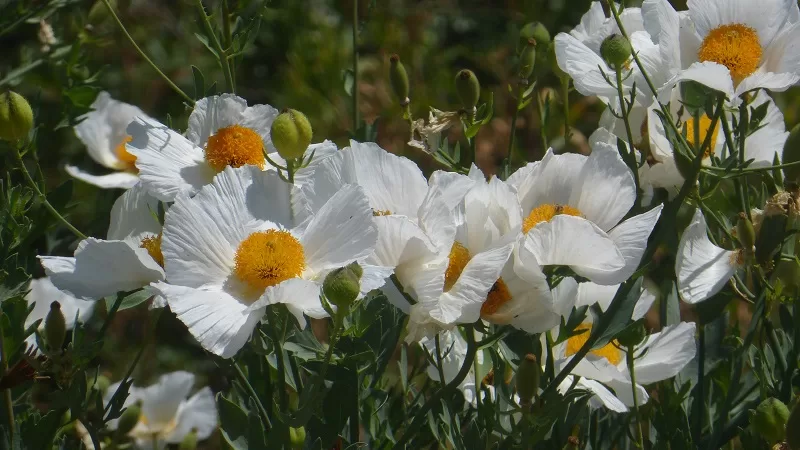
The Matillija poppy, Romneya coulteri sometimes called the fried egg flower, is easily one of the most spectacular wildflowers anywhere. This poppy is a tough perennial that can grow to be more than 10 feet tall, producing masses of large white flowers with pompoms of yellow stamens covered in fragrant pollen that attracts bees. The Matillija poppy is native to Southern and Baja California. It was the runner up for state flower, but lost out to the California poppy. There is a similar poppy species in the eastern half of the Santa Monica Mountains known as Chicalote, Argemone munita. It also has large white flowers with yellow centers, but the plant is smaller and pricklier, and the stamen cluster is smaller.
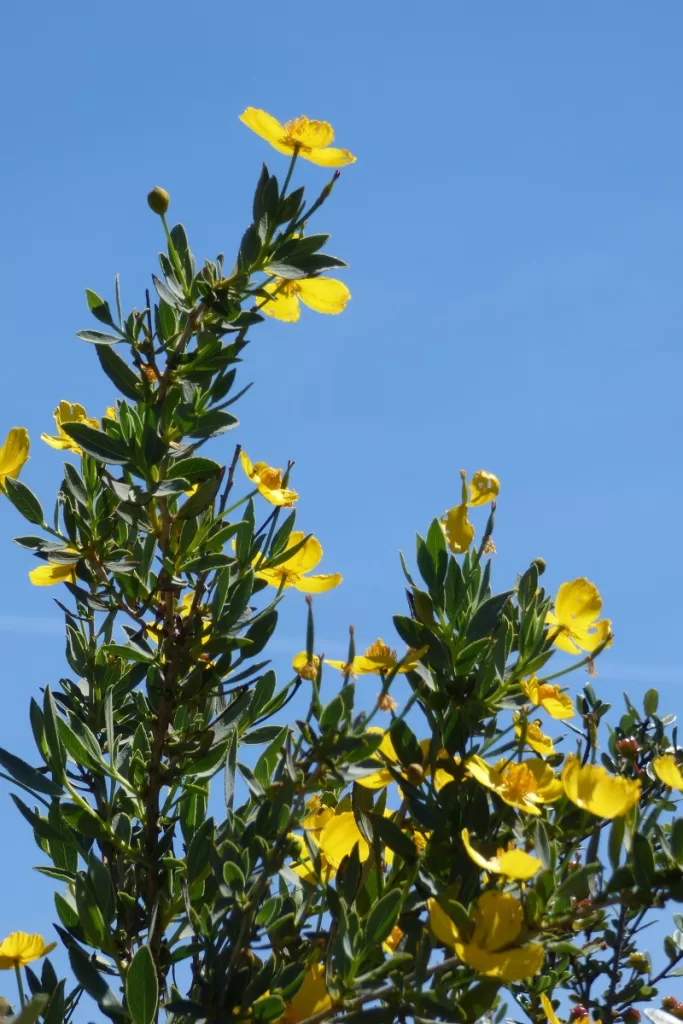
The bush poppy, Dendromecon rigida, can grow to be more than 10 feet tall. It’s a native of Southern and Baja California. This dramatic wildflower is a fire follower that is experiencing a super bloom of its own in parts of the Woolsey Fire burn zone. The seeds of this perennial poppy can remain dormant in the soil for decades, waiting for conditions to be right. It sprouts after a fire, growing in space that would have been shaded by other shrubs and trees. It blooms for several years, producing large gold flowers. As the shrubs like ceanothus return, the bush poppy disappears, its seeds waiting for the next opportunity to grow. Masses of this beautiful plant are in bloom on Kanan Dume Road. There are also bush poppies in the burn zone in Topanga State Park. We recently saw them misidentified as buttercups, but these glorious yellow flowers are unmistakably members of the poppy family.
White bleeding heart, Ehrendorferia ochroleuca, also known as “ear drops,” is another fire follower that only blooms abundantly after a wildfire. It had a spectacular year in 2019 following the Woolsey Fire, but there are still individual plants in parts of the old burn zone, and this is a plant to look for in the Topanga State Park fire recovery zone later this spring. The cream colored flowers smell a little like vanilla, and are produced on plants that have fern-like gray foliage. When conditions are right they can easily grow to be five or six feet tall, and the fragrance from a mass of flowers is almost dizzying. This is an unforgettable wildflower.
Fire poppy, Papaver Californium (shown opposite here with the tiny, strong-scented white flowers of eucrypta, another fire follower) is another species that depends on the cycle of fire and regrowth. It is a California endemic species, only found in a limited range. As its name implies, it only appears after a fire. It is ephemeral, growing fast and swiftly setting seed that may lay dormant in the soil for decades. This is a strange, rare flower that many of us may only encounter once in a lifetime.
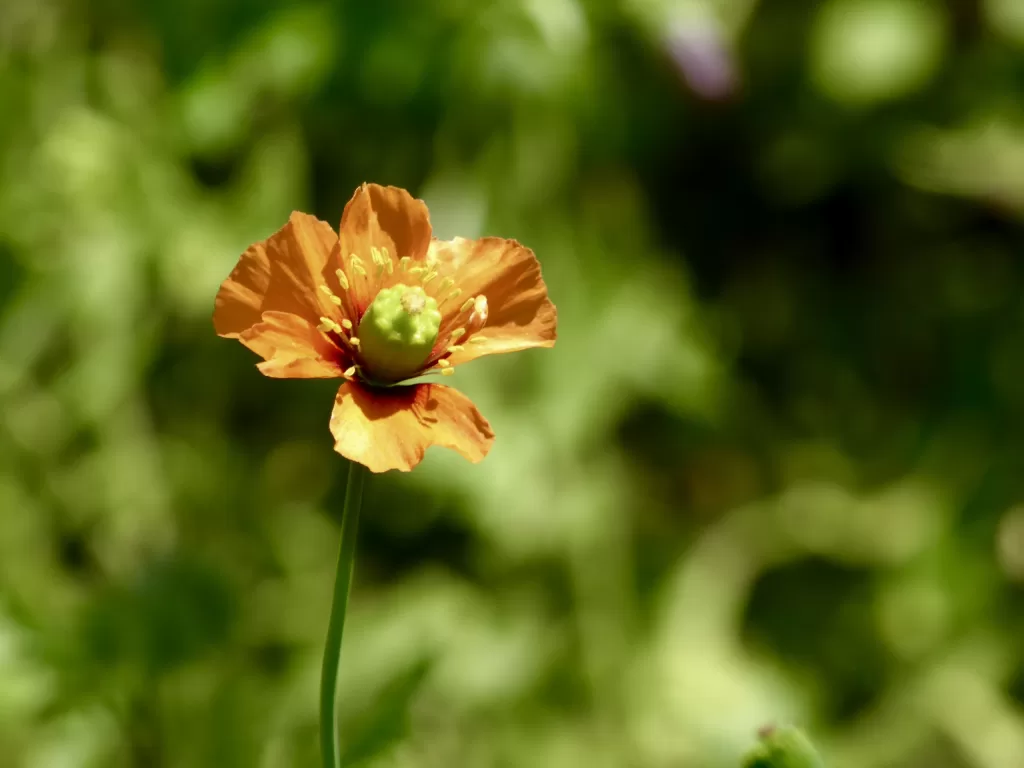
The wind poppy, Papaver heterophyllum. resembles the fire poppy, but it has a dark red center. It is also a fire follower, usually only seen when conditions are right. The wind poppy is more widely distributed than the fire poppy, growing in the coast ranges and Sierras in California and across parts of Northern Mexico.
The tufted poppy looks a lot like the California poppy, but it lacks the red collar at the base of the petals, and it is yellow rather than orange. This beautiful wildflower is a true annual. It grows throughout the Santa Monica Mountains, and its range extends into Oregon and Baja California.
Tiny, beautiful cream cups, Platystemon californicus, are uncommon in the Santa Monica Mountains, but grow in a few locations. It’s far more common in the high desert, where it often blooms among California poppies and other wildflowers.
Watch for a panoply of poppies this spring. These flowers, delicate and incredibly tough, have adapted to life in extreme conditions and are a cornerstone of California’s ecology as well as a symbol of our state.












